#willmer little axe broadnax
Text
Celebrating Black Queer Icons:
Willmer "Little Axe" Broadnax
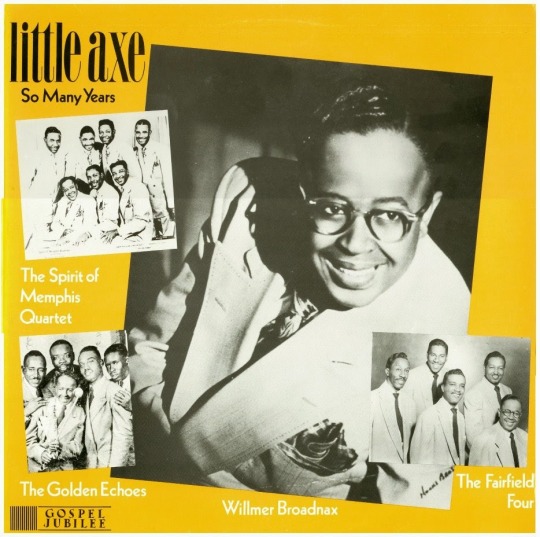
youtube
youtube
Willmer "Little Axe" Broadnax was born December 28, 1916 in Houston, Texas to parents William Broadnax and Gussie Frazier. Broadnax was an American hard gospel quartet singer that gained widespread popularity during the Golden Age of Traditional Black Gospel (1940s/50s). He received the nickname Little Axe from his short stature and as a companion to his brother, William "Big Axe" Broadnax, a popular baritone. By the time of the 1930s census Broadnax was living with his mother, brother, step-father Augustus Flowers, and step-sister Amartha Broadnax*. Broadnax began his career in gospel during his teen years, alongside his brother William. In the 1930s the Broadnax brothers joined the St Paul Gospel Singers in Houston, TX. The Broadnax brothers would later move to Los Angeles and join the Southern Gospel Singers. The group did not tour, and only preformed on weekends. The Broadnax brothers eventually broke off and formed their own quartet, The Golden Echoes. At some point Broadnax's brother, William, left the group and moved to Atlanta, GA where he joined The Five Trumpets. Broadnax stayed on as the lead of this iteration of the Echoes until they disbanded in 1949, after Specialty Records label chief, Art Rupe, decided to drop the group. The Golden Echoes only made a single recording with the label. Pianist Willie Love would go on to say "Little Axe couldn't sing low, because he had a relatively high voice. It wasnt falsetto, it was naturally high. So somebody had to sing the bottom.". Broadnax and the baritone Paul Foster sometimes created the illusion of a multi-octave singer together. In 1950 Broadnax joined The Spirit of Memphis Quartet, recording for King Records, and appearing with them until at least 1952. He would go on to join The Fairfield Four, shortly after, and in the early 1960s served as one of Archie Brownlee's replacements in the Five Blind Boys of Mississippi. Broadnax lead another iteration of The Golden Echoes until 1965, releasing singles through Peacock Records. As gospel's popularity waned Broadnax decided to retire from touring. Broadnax continued to perform and record in some capacity, most notably recording with the Blind Boys in the 1970s and 80s. On May 23, 1992, in Philidelphia, PA, Broadnax was killed by his lover, Lavina Richardson. After witnessing Richardson in a vehicle with another man, Broadnax pursued the vehicle, bumping into it several times with his own. At some point both vehicles stopped and Broadnax pulled Richardson from her vehicle and threatened her with a knife. A bystander disarmed Broadnax, after which Richardson picked up the knife and stabbed him three times. Broadnax died several days later, on June 1st, 1992, as a result of the injuries. Richardson was later convicted of manslaughter. After Broadnax's death it was publicly discovered that he had been assigned female at birth, which created a notable stir in the gospel community. Many claimed "they always knew" but there is no evidence to support anyone other than Broadnax's brother and other close family knew.
*This post by @ubleproject (The Untitled Black Lesbian Elder Project), which served as a source for me and Broadnax's wiki article, speculates that its possible Amartha is the deadname of the singer we know as Willmer "Little Axe" Broadnax, and that Amartha may have assumed the older brother's name to preform. In which case, Broadnax was born in Louisiana in 1922 to Frazier and Flowers. In the 1930 census Amartha's entry was corrected by hand to list Amartha as a girl. The census taker had initially listed Amartha as a boy, suggesting Amartha may have been presenting as such, at the time. Amartha is also, interestingly listed as Amartha Broadnax, despite being listed as Frazier and Flowers' biological child. There are little to no records of Amartha's later life.
I have two more planned, but not sure on the order I will be doing them. The last will probably be out in the beginning of March. After that I will be saving the rest of my list for October, when the US is having LGBT History Month, and the UK is having its Black History Month. I will start including cis icons as well, such as Bayard Rustin. As always corrections and suggestions are welcome and much desired.
#celebrating black queer icons#black history#black history month#black history is queer history#black history is american history#willmer broadnax#little axe#willmer little axe broadnax#gospel music#black gospel#traditional black gospel
101 notes
·
View notes
Text
#Trans History#Queer History#Elagabalus#Frances Thompson#Tamara Rees#Willmer ‘Little Axe’ Broadnax#Harry Allen
23 notes
·
View notes
Text
Why Alastor being FTM transgender is less absurd than you may think
Fuck it, I'm just gonna post this.
"Alastor was FTM" probably sounds like a completely stupid concept, at first glance.
But in some respects, it was actually easier to pass for male in his time, because it used to be easier to forge your identity.
There are several examples of trans men who lived before the existence of HRT and SRS, but still passed.
When designing Trans Al, I had Billy Tipton and Willmer "Little Axe" Broadnax on my mind. There are earlier examples that are closer to being Alastor's contemporaries, or existed before his time, such as Albert Cashier.
Additionally, there's a lot of historical fiction about passing along lines of race. But there's a surprising lack of fiction about women of color (or, AFABs) who passed for male. There are many examples of women of color who passed for men of color, or even white men.
As I mentioned before, Clementine Barnabet actually passed for male to get away with murder.
What can I say. The early 20th century was an interesting time.
8 notes
·
View notes
Photo

Willmer "Little Axe" Broadnax (deceased)
Gender: Transgender man
Sexuality: N/A
DOB: 28 December 1916
RIP: 1 June 1992
Ethnicity: African American
Occupation: Gospel singer
Note: It wasn’t known by the public until his death that he was a trans man. Only his brother knew.
#Little Axe#Willmer Broadnax#lgbt history#transgender#trans man#1916#rip#historical#black#poc#african american#singer
62 notes
·
View notes
Text
Historical Trans Men
1. Dr. James Barry, 1789-1865, military surgeon
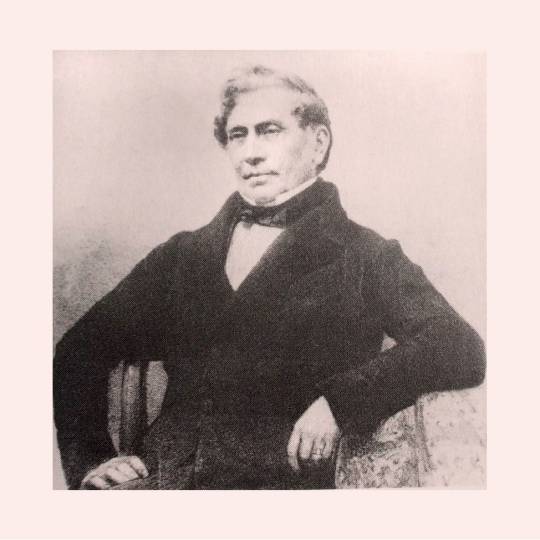
2. "One-Eyed" Charley Parkhurst, 1812-1879, stagecoach driver

3. Ralph Kerwineo, 1876-1932, clerk

4. Harry Allen, 1882-1922, vagrant and criminal

5. Amelio Robles Ávila, 1889-1984, military commander during the Mexican Revolution

6. Victor Barker, 1895-1960, restaurant proprietor

7. Zdeněk Koubek, 1913-1986, track athlete

8. Billy Tipton, 1914-1989, jazz musician
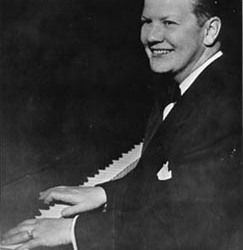
9. Willmer "Little Ax" M. Broadnax, 1916-1992, jazz musician
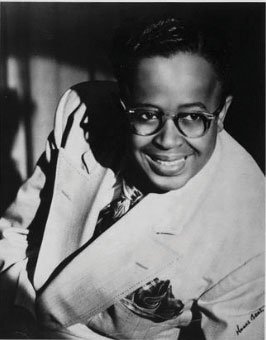
10. Jim McHarris, 1924-?, auto mechanic

26K notes
·
View notes
Text
Pop pioneer SOPHIE has died
The legendary musician, producer, and collaborator SOPHIE has passed on. A producer as prolific as Brian Eno. A critically acclaimed musician. Trans Icon. Founder of HyperPop, the genre that defines Pop in this age. SOPHIE’s influence becomes obvious upon listening. SOPHIE’s fingerprints are all over much of modern music, either directly or indirectly.
I urge you to take time to appreciate SOPHIE and fellow trans trailblazers, like Wendy Carlos, Lauren Bousfield, and Laura Les.
Wendy Carlos is one of the best soundtrack artists alive, responsible for The Shining, TRON, and Clockwork Orange. Lauren Bousfield’s debut as Nero’s Day At Disneyland laid the foundation for breakbeat’s evolution into hyperpop, whilst SOPHIE and 100 Gecs (Laura Les’s duo with Dylan Brady) define hyperpop itself.
That's by no means the end of the list of genderqueer musicians, which includes Of Montreal, Sam Smith, Laura Jane Grace of Against Me!, Ruby Rose, Glass Beach, Zand, Dorian Electra, Christine and the Queens, Vektroid (Macintosh Plus), Left @ London, and Mal Blum.
Nor is that list recent. Though The Clockwork Orange came out in 1971 and Carlos was out by the time she was a contributor to Ziggy Stardust and the Spiders from Mars. She is far beat by 40’s gospel singer Willmer “Little Ax” Broadnax, who sang with the biggest acts of his day. Like 30’s Jazz Singer Billy Tipton, Little Ax was transmasculine.
Closer to home for me are 4th Curtis https://www.4thcurtis.com/, who are absolutely wonderful. I truly believe they will define an entire social movement, aesthetic, and punk scene. My Dutch music geek friend is a fucking huge fan of them, and one of their members is a good friend of Literally 2 out of the 3 kindest people I know. That’s not something that maybe should go into a formal article like this, but CPunk fucking rocks and they do too.
Trans individuals have a long history in music, and have come to define much of what we listen to today.
We just lost one of the greatest. SOPHIE died how SOPHIE lived: Climbing high, admiring beauty, and being among the stars.
Admire the moon for SOPHIE. Yourself too.
Rest in peace Sophie Xeon.
#Music#Tragedy#Trans#Transgender#Musicians#Trans Musicians#Pop#Hyperpop#Soundtrack#SOPHIE#Sophie Xeon#Pop music#Cpunk#Cripplepunk#The Clockwork Orange#Clockwork Orange#Brian Eno#Wendy Carlos#The Shining#Ready Player One#Ziggy Stardust#David Bowie#4th Curtis#Jazz#Gospel#Punk#Social Movement#TRON#Lauren Bousfield#Nero's Day at Disneyland
1K notes
·
View notes
Text
Willmer ‘Little Axe’ Broadnax
Willmer Broadnax (1916-1992) was a famous American tenor singer during the golden age of traditional Black gospel music. Called 'Little Ax' next to his taller brother, William 'Big Axe' Broadnax.

Born in Houston, Texas, Broadnax began singing gospel as a teenager. Willmer and William both left for Los Angeles to join the Southern Gospel Singers, before forming their own quarter. When William left to singing in Atlanta, Willmer stayed in his group, Little Axe and the Golden Echoes. Known for his uniquely high singing voice, described by a contemporary as 'sweer but almost vicious, dripping with emotion'.
Willmer continued to move around the south, to Memphis and Mississippi, touring and recording for decades. Even after retirement, he continued to record with the Five Blind Boys of Mississippi into the 1980s.
In 1992, Willmer was killed in a lover's quarrel. Upon his death, it was announced publically that Willmer was a trans man. While only his family knew for certain, many in the gospel music scene said they knew, guessed, or wondered, and simply didn't care.
Today, Willmer Broadnax is remembered as a talented Black trans man at the forefront of a vibrant musical tradition.
Songs to Listen To!
1. "When the Saints go Marching In"
2. "You Are My Sunshine"
#long post#history#world history#the saints#saints#sunshine#willmer#american history#black history#black men#gospel#gospel music#music history#20th century#wilmer broadnax#willmer broadnax#trans#transgender#ftm#trans history#pride#queer history#lgbtq history#lgbt history#little ax
62 notes
·
View notes
Text
Willmer M. "Little Axe" Broadnax, American gospel singer and trans man

Trans Guys writes:
Wilmer “Little Axe” Broadnax, December 28, 1916 – 1994, was a gospel singer who worked and recorded with many of the most famous gospel groups of his day, including The Golden Echoes, one of the top touring gospel quartet groups of the 40s, and the renowned Spirit of Memphis Quartet.

It is likely that only his brother William "Big Axe" Broadnax and other close family members knew about his transgender history.
Caption by transactual.
youtube
43 notes
·
View notes
Note
I’m in my late twenties and I’m only now coming into terms with the fact that I’m trans masculine. I’ve been a longtime follower of yours under different tumblr names, but seeing you thrive has always made me happy. Thank you.

son, you're in a very exciting time in your life.
You've been given a gift that not many cis people get - the opportunity to build yourself from the ground-up in a very thoughtful and intentional way. It may feel like this "gift" is a particularly rank shit sandwich some days, and like it's an insult to refer to something that makes your life so difficult in positive terms. But I've learned that sometimes you have to repeatedly choose to reframe something and reintegrate it into yourself.
You're going to be doing a lot of that - revisiting old memories and ways of being and seeing them with more clarity and self-understanding. Don't worry if everything doesn't resolve itself into a coherent narrative immediately! Like a teen who's throwing paint at the walls to see what sticks, there's some frenzied pressure to figure yourself out immediately and project a very polished camera-ready version of yourself right away. You don’t need to know who you are from day 1. It is normal and okay to try on different versions of ourselves! This is particularly fraught for trans people, who may feel a pressure to broadcast to all our family and friends how extremely OK and SUPER CHILL this big new fact about us is. It often feels like we are skipping a bunch of steps, life markers from childhood that it’s harmless to indulge in. One fun way to "test out" new names for ourselves is to recreate kid experiences like writing your name in big bubble letters on the sidewalk with chalk or looking at fun keychains with your name... chasing any experience that gives you a sense of joy. Gender euphoria is real, and you need to orient yourself towards whatever gives you a sense of peace and wholeness. Yes, some of transitioning is setting down those things that no longer serve us, but it is good to remember to move forward as well.
Take heart that you come from a long line of strength, from Alan Hart to Jack Bee Garland to Willmer "Little Ax" Broadnax to Billy Tipton to Charley Parkhurst to Lou Sullivan. Our knowledge is historied and long; let their momentum carry you forward. I highly recommend bell hooks’s work, The Will To Change, which was powerful for me in considering my relationship to masculinity. I was also very impacted by The Nearest Exist May Be Behind You by Bear Bergman. Stone Butch Blues by Leslie Feinberg is also a classic for a reason. If you are looking for a day-to-day experiential discussion of HRT, Max Valerio’s Testosterone Files are invaluable. I’ve also been excited to read the second edition of Becoming a Visible Man by Jamison Green. You have this opportunity to be intentional in your gender and your way of interacting with the world. Use it to be a good human being!

#I'm your dad now#them's the breaks kid#eat your vegetables and be kind to others and use this opportunity to grow as a person#take this time to take stock in yourself and live intentionally#please always imagine me hooting and hollering in your ear in loud support#my ask box is always open#<3#trans#queer#gender
11 notes
·
View notes
Text
Black trans folks
Day 1 - Willmer “Little Axe” Broadnax (1916 - 1992)

Broadnax was a trans man who moved to Southern California from Houston with his brother to join the Southern Gospel Singers. He and his brother later formed their own group called “Little Axe and the Golden Echoes.” Eventually the brothers parted ways and joined various other groups throughout their musical careers
Day 2 - Jim McHarris (1924-Unknown)
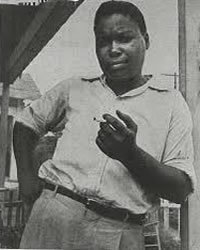
McHarris was a trans man born in Mississippi. He was sent to foster care after his parents died. He transitioned in his early teens and began traveling the country taking various jobs. He was notorious for being a ladies’ man and was engaged to be married when one evening, he was pulled over for problems with his lights and the officers found an open bottle of whiskey in his car. During the pat-down, he revealed his birth sex to the officers. The police didn't believe him, so McHarris was forced to strip naked in front of a judge and the police. He served 30 days on a jail farm and continued living as a man upon release.
Day 3 - Marsha P. Johnson (1945-1992)

Johnson was a prominent figure within the gay liberation movement and was part of the Stonewall uprising of 1969. She co-founded the Street Transvestite Action Revolutionaries with Sylvia Rivera. They engaged in sex work in order to secure hotel rooms where they fed and housed queer youth. She was later involved with ACT-UP, a coalition working to impact the lives of people living with AIDS. Her body was found in the Hudson River in 1992 and many believed she may have been murdered by the mafia. Her death was never solved, despite multiple attempts to reopen the case.
Day 4 - Sir Lady Java (1943-Present)

Sir Lady Java was born in New Orleans. She transitioned at an early age with her mother’s support. She made a living in the nightclub scene and eventually moved to Los Angeles, where she become a hit in a club frequented by Redd Foxx, Sammy Davis Jr., Richard Pryor, Don Rickles and other great comedy legends of that time. The Los Angeles Police Department started shutting down her shows for violating an ordinance that prohibited a person from dressing as someone of the “opposite sex.” They threatened to also fine any venue that hosted her. She protested and involved the ACLU, but the case was thrown out on the grounds that only club owners could sue. She went on to become an actress and prominent transgender activist
Day 5 - The Lady Chablis (1957-2016)
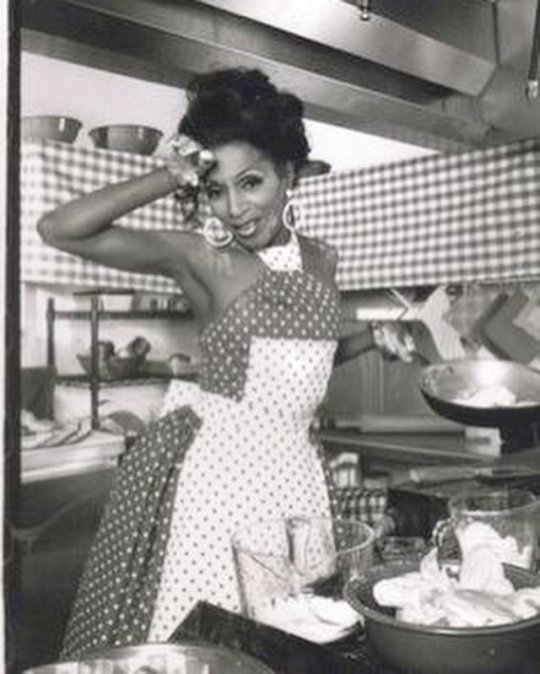
The Lady Chablis was an actress and author who was originally born in Florida. She dropped out of high school and decided as a teenager to go by the name Chablis. Her mother saw the name on a wine bottle and wanted it for her unborn daughter, whom she later miscarried. After asking for her mother’s blessing, Chablis legally adopted the name. Chablis became a hit in the club scene and was the first drag performer to be accepted by a larger audience. She was best known for her appearance in the bestselling book and film adaptation of Midnight in The Garden of Good and Evil. She made other film and television appearances, including documentaries about her life, made-for-TV films and even The Real Housewives of Atlanta. Chablis died of pneumonia at the age of 59.
Day 6 - Mary Jones (Unknown)

Jones was a trans woman living in New York City in the 1830s who made a living as a sex worker. Her clients were wealthy white men, and after she slept with them, she’d steal their wallets as a bonus. Most of them never reported the thefts because they didn’t want their conservative peers to know they had a fetish for black trans women. She was eventually charged with grand larceny when someone turned her in to the police. Jones was released after five years in prison, at which point she was arrested again for dressing as a woman. She served an additional five months.
Day 7 - Lucy Hicks Anderson (1886-1954)

As a child, Anderson wore dresses and chose her name. Her mother took her to a physician who advised her mother to raise Anderson as a girl. Anderson, who was born in Kentucky, graduated and started traveling and working as a domestic worker. The Ventura County district attorney found out she was trans and the courts charged her with perjury for illegally signing a marriage license as a trans woman. She was given 10 years probation instead of going to prison. Since Anderson had received allotment checks as the wife of a soldier in the U.S. Army, the courts convicted both her and her second husband of fraud in 1946. and she was sent to prison. When she got out of prison, she was forced to leave Oxnard; she lived in Los Angeles the rest of her life
Day 8 - Miss Major Griffin-Gracy (1940-Present)

Another Stonewall veteran, Miss Major has continued to engage in vital activism on behalf of the LGBT community. She was an AIDS advocate in the 80's and 90's and more recently was executive director of the Transgender GenderVariant Intersex Justice Project (TGIJP), which supports transgender women affected by incarceration and police violence. She is also the subject of the upcoming documentary, Major!
Day 9 - Carlett A. Brown (1927-Unknown)

Brown was serving in the Navy when she began being treated for a few medical conditions. There was concern she was mentally ill because she admitted she wanted to be a woman. While undergoing a physical exam, it was discovered Brown was actually intersex. She refused to have the doctor-recommended surgery to become “more typically male,” according to Autostraddle, and decided she wanted to have gender confirmation surgery instead. (It was referred to as “sex reassignment surgery” at the time.) After having the surgery, she planned to marry her boyfriend, Sgt. Eugene Martin.
Day 10 - Tracey "Africa" Norman (1952-Present)

Tracey Norman, who often went by Tracey Africa, is best known for being the first African American transgender woman model. Norman appeared on a box of Clairol in the 1970s and landed a contract with Avon for a skin care line. In 1971, renowned photographer Irving Penn photographed Norman for Italian Vogue. She was also photographed for Essence in 1980, but when her transgender identity was discovered she was blacklisted in the United States.
12 notes
·
View notes
Photo

Willmer "Little Ax" Broadnax (LGBT HIstory Month)
Born in Houston in 1916, "Little Ax" was a gospel singer known for his tiny stature and huge voice. Broadnax performed with several gospel groups, including the Southern Gospel Singers, the Five Trumpets, the Golden Echoes, the Spirit of Memphis Quartet, and most famously, the Five Blind Boys of Mississippi.
Continuing to perform well into his '70s, it wasn't until an autopsy was performed, following his death, that it was revealed Broadnax had been assigned female at birth.
Read more about Wilmer here!
17 notes
·
View notes
Text
Celebrating Black Queer Icons:
Miss Major Griffin-Gracy
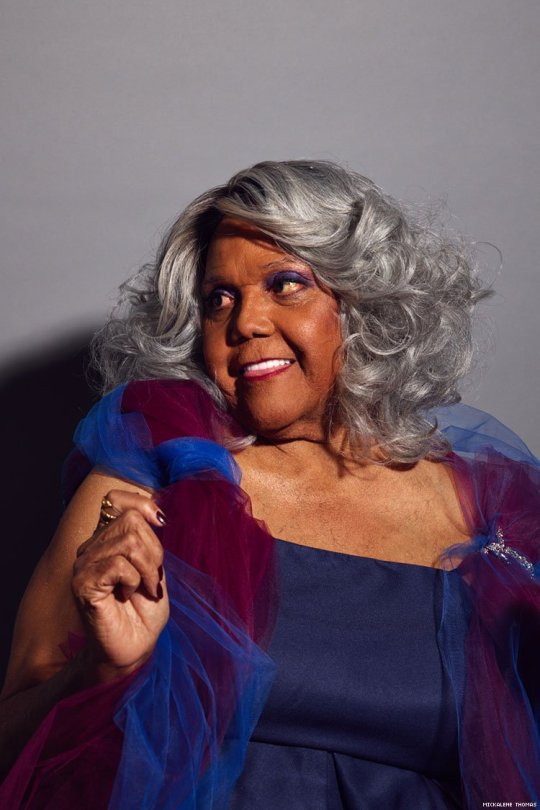
Born on October 25, 1940, Major is a trans women well known as a leader in the broader trans community and an activist, with a particular focus on black and incarcerated trans women. Major grew up in Chicago's South Side and participated in the local drag scene, during her youth. Major described the experiences as glamorous, like going to the Oscars. While she did not have the contemporary language for it, Major has been out as a trans women since the late 1950s. This made her a target of criticism, mistreatment, and violence, even among her queer peers. Majors transition, especially getting her hands on hormones, was largely a black market affair. Given the lack of employment opportunities for black trans women at the time, she largely survived through sex work and other criminalized activities. At some point Major moved to New York City and established herself amongst the cities queer community, despite the prejudice against trans women. She participated in the 1969 Stonewall Uprising. Later, after getting convicted on a burglary charge, Major was imprisoned with men at Clinton Correctional Facility in Dannemora, NY. There she met Frank "Big Black" Smith, a participant in the 1971 Attica Uprising at Attica Correctional Facility. He treated Major, and her identity as a woman, with respect and the two built a friendship. Smith also taught Major a good bit about advocating for herself and other trans women being mistreated by the US Justice System. Major was released from Dannemora in 1974. Major moved to San Diego in 1978 and almost immediately began working on community efforts and participating in grassroots movements. Starting by working at a food bank, she would go on to provide services directly to incarcerated, addicted, and homeless trans women, and would provide additional services after the AIDS epidemic started. In the 1990s Major moved to the San Fransisco Bay Area, where she continued her work, alongside organizations like the Tenderloin AIDS Resource Center. In 2003 Major became the Director of the Transgender Gender Variant Intersex Justice Project, shortly after its founding by attorney and community organizer Alexander L Lee, a trans man. The group works to end human rights abuses in the California Prison System, with a focus on trans, intersex, and gender variant POC. The position has since been passed on to Janetta Johnson, a previously incarcerated trans woman who mentored under Major. She is the focus of the 2015, award winning, documentary Major!. Major has five sons, two biological and three runaways she adopted, after meeting them in a California park. Her oldest son, Christopher was born in 1978, and her youngest, Asiah (rhymes with messiah) in 2021. At 82 years old Miss Major Griffin-Gracy continues to be an active member of her community and an advocate for our rights as trans people.
Haven't settled on which yet, but Willmer "Little Ax" Broadnax or Victor J Mukasa will be next!
#celebrating black queer icons#black history#black history month#black history is queer history#black history is american history#abolish the police#abolish prisons#decriminalize sex work#miss major griffin-gracy#major!#really disappointing to find out she doesnt show up in Popular Tags#stonewall inn#stonewall riots#stonewall uprising#transgender gender variant intersex justice project
335 notes
·
View notes
Text
Wilmer Broadnax: A LGBTQ+ Biography By The Ubuntu Bio Project
Wilmer Broadnax: A LGBTQ+ Biography By The Ubuntu Bio Project
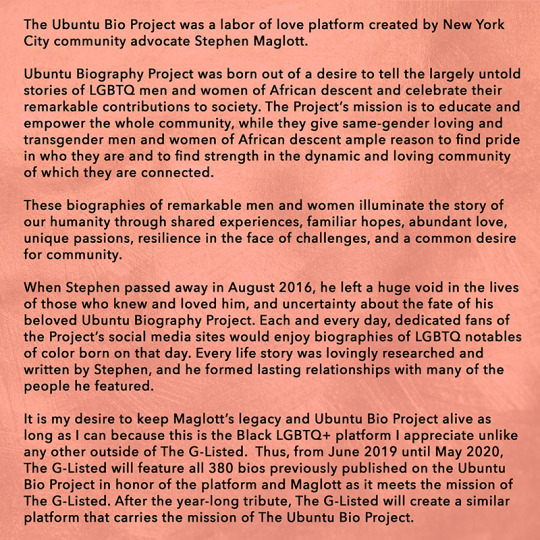
Wilmer Broadnax was born on December 28, 1916 (to June 1, 1992). Broadnax was a gospel quartet singer and soloist best known as “Little Axe” who worked and recorded with many of the most famous and influential groups of his day. Broadnax’s first name can be found with several variations, including Willmer, Wilmur, Wilbur, Wilbern, and Willie. Following Broadnax’s death, it was discovered that the…
View On WordPress
0 notes
Photo

Willmer M. Broadnax (December 28, 1916 – June 1, 1992), also known as "Little Ax", "Wilbur", "Willie", and "Wilmer", was an American hard gospel quartet singer. After moving to southern California in the mid-1940s, Wilmer and brother, William, joined the Southern Gospel Singers, a group which performed primarily on weekends. Wilmer and William soon formed their own quartet, the Golden Echoes. William eventually left for Atlanta, where he joined the Five Trumpets, but Willmer stayed on as lead singer. In 1949 the group, augmented by future Soul Stirrer Paul Foster, recorded a single of "When the Saints Go Marching In" for Specialty Records. Label chief Art Rupe decided to drop them before they could record a follow-up, and shortly thereafter the Golden Echoes disbanded. In 1950, Broadnax joined the Spirit of Memphis Quartet. Along with Broadnax, the group featured two other leads – Jethro "Jet" Bledsoe, a bluesy crooner, and Silas Steele, an overpowering baritone. The Spirit of Memphis Quartet recorded for King Records, and Broadnax appeared on their releases at least until 1952. Shortly after that, Broadnax moved on, working with The Fairfield Four, and in the early 1960s as one of the replacements for Archie Brownlee in the Five Blind Boys of Mississippi. Until 1965 Wilmer headed a quartet called "Little Ax and the Golden Echoes," which released some singles on Peacock Records. By then, quartet singing was fading in commercial viability, and Broadnax retired from touring. In retirement, Broadnax continued to record new material occasionally with the Blind Boys into the 1970s and 1980s. Upon Broadnax's death in 1992, it was discovered that Broadnax was a trans man. -Wikipedia (artwork by @elijah.haswell) #PeopleOfPride #WillmerBroadnax #octoberislgbthistorymonth #lgbthistorymonth #historymonth #EliHaswell #loveislove #lgbt #lgbtq #rainbow #gay #lesbian #transgender #bisexual #pansexual #asexual #genderqueer #male #female #love #acceptance #diversity #lovewhoyouwant #youareamazing #youarebeautiful #hernandopride #hernandoflorida https://www.instagram.com/p/B4QK4IClAPW/?igshid=md9c64hrb7q5
#peopleofpride#willmerbroadnax#octoberislgbthistorymonth#lgbthistorymonth#historymonth#elihaswell#loveislove#lgbt#lgbtq#rainbow#gay#lesbian#transgender#bisexual#pansexual#asexual#genderqueer#male#female#love#acceptance#diversity#lovewhoyouwant#youareamazing#youarebeautiful#hernandopride#hernandoflorida
0 notes
Text
On Lesbianism
I’ll state it at the top here, because many have not understood my stance. The purpose of this essay is not to say that Lesbian cannot mean “Female homosexual.” Rather, my objective is to show that Lesbian means more than that single definition suggests.
Female Homosexuals are lesbians, unless they personally do not want to use that label.
Now, on with the show:
Lesbianism is not about gatekeeping, and I don’t want to have to keep convincing people that the movement popularized by someone who wrote a book full of lies and hate speech then immediately worked with Ronald Reagan is a bad movement.
In the early ’70s, groups of what would now be called “gender critical” feminists threatened violence against many trans women who dared exist in women’s and lesbian spaces.
For example, trans woman Beth Elliott, who was at the 1973 West Coast Lesbian Feminist Conference to perform with her lesbian band, was ridiculed onstage and had her existence protested.
In 1979, radical feminist Janice Raymond, a professor at the University of Massachusetts, wrote the defining work of the TERF movement, “Transsexual Empire: The Making of the Shemale,” in which she argued that “transsexualism” should be “morally mandating it out of existence”—mainly by restricting access to transition care (a political position shared by the Trump administration). Soon after she wrote another paper, published for the government-funded, National Center for Healthcare Technology — and the Reagan administration cut off Medicare and private health insurance coverage for transition-related care.
Trans Exclusionary Radical Feminism is a fundamentally unsustainable ideology.
Lesbianism is a fundamentally sustainable existence.
There used to be a lesbian bar or queer bar or gay bar in practically every small town — sometimes one of each.
After surviving constant police raids, these queer spaces began closing even Before the AIDS epidemic.
Because TERFs would take them over, kick out transfems and their friends. Suddenly, there weren’t enough local patrons to keep the bars open, because the majority had been kicked out. With America’s lack of public transportation, not enough people were coming from out of town either.
TERFs, even beyond that, were a fundamental part of the state apparatus that let AIDS kill millions.
For those who don’t know, Lesbian, from the time of Sappho of Lesbos to the about 1970′s, referred to someone who rejects the patriarchal hierarchy. It was not only a sexuality, but almost akin to a gender spectrum.
That changed in the 1970′s when TERFs co-opted 2nd Wave feminism, working with Ronald fucking Reagan to ban insurance for trans healthcare.
TERFs took over the narrative, the bars, the movement, and changed Lesbian from the most revolutionary and integral queer communal identity of 2 fucking THOUSAND years, from “Someone who rejects the patriarchal hierarchy” to “A woman with a vagina who’s sexually attracted to other women with vaginas”
How does this fit into the bi lesbian debate? As I said, Lesbian is more of a Gender Spectrum than anything else, it was used much in the same way that we use queer or genderqueer today.
And it’s intersectional too.
See, if you were to try to ascribe a rigid, biological, or localized model of an identity across multiple cultures, it will fail. It will exclude people who should not be excluded. ESPECIALLY Intersex people. That’s why “Two Spirit” isn’t something rigid- it is an umbrella term for the identities within over a dozen different cultures.
In the next two sections, I have excerpts on Two-Spirit and Butch identity, to give a better idea of the linguistics of queer culture:
This section on Two-Spirit comes from wikipedia, as it has the most links to further sources,
I have linked all sources directly, though you can also access them from the Wikipedia page’s bibliography:
Two-Spirit is a pan-Indian, umbrella term used by some Indigenous North Americans to describe Native people who fulfill a traditional ceremonial and social role that does not correlate to the western binary. [1] [2] [3]
Created at the 1990 Indigenous lesbian and gay international gathering in Winnipeg, it was "specifically chosen to distinguish and distance Native American/First Nations people from non-Native peoples." [4]
Criticism of Two-Spirit arises from 2 major points,
1. That it can exasperate the erasure of the traditional terms and identities of specific cultures.
a. Notice how this parallels criticisms of Gay being used as the umbrella term for queer culture in general.
2. That it implies adherence to the Western binary; that Natives believe these individuals are "both male and female" [4]
a. Again, you’ll notice that this parallels my criticisms of the TERF definition of Lesbian, that tying LGBT+ identities to a rigid western gender binary does a disservice to LGBT+ people,—especially across cultures.
“Two Spirit" wasn’t intended to be interchangeable with "LGBT Native American" or "Gay Indian"; [2] nor was it meant to replace traditional terms in Indigenous languages.
Rather, it was created to serve as a pan-Indian unifier. [1] [2] [4]
—The term and identity of two-spirit "does not make sense" unless it is contextualized within a Native American or First Nations framework and traditional cultural understanding. [3] [10] [11]
The ceremonial roles intended to be under the modern umbrella of two-spirit can vary widely, even among the Indigenous people who accept the English-language term. No one Native American/First Nations' culture's gender or sexuality categories apply to all, or even a majority of, these cultures. [4] [8]
Butch:
At the turn of the 20th century, the word “butch” meant “tough kid” or referred to a men’s haircut. It surfaced as a term used among women who identified as lesbians in the 1940s, but historians and scholars have struggled to identify exactly how or when it entered the queer lexicon.
However it happened, "Butch” has come to mean a “lesbian of masculine appearance or behavior.”
(I have heard that, though the words originate from French, Femme & Butch came into Lesbian culture from Latina lesbian culture, and if I find a good source for that I will share. If I had to guess, there may be some wonderful history to find of it in New Orleans—or somewhere similar.)
Before “butch” became a term used by lesbians, there were other terms in the 1920s that described masculinity among queer women. According to the historian Lillian Faderman,“bull dagger” and “bull dyke” came out of the Black lesbian subculture of Harlem, where there were “mama” and “papa” relationships that looked like butch-femme partnerships. Performer Gladys Bentley epitomized this style with her men’s hats, ties and jackets. Women in same-sex relationships at this time didn’t yet use the word “lesbian” to describe themselves.
Prison slang introduced the terms “daddy,” “husband,” and “top sargeant” into the working class lesbian subculture of the 1930s.
This lesbian history happened alongside Trans history, and often intersected, just as the Harlem renaissance had music at the forefront of black and lesbian (and trans!) culture, so too can trans musicians, actresses, and more be found all across history, and all across the US.
Some of the earliest known trans musicians are Billy Tipton and Willmer “Little Ax” Broadnax—Both transmasculine musicians who hold an important place in not just queer history, but music history.
Lesbian isn’t rigid & biological, it’s social and personal, built up of community and self-determination.
And it has been for millennia.
So when people say that nonbinary lesbians aren’t lesbian, or asexual lesboromantics aren’t lesbian, or bisexual lesbians aren’t lesbian, it’s not if those things are technically true within the framework — It’s that those statements are working off a fundamentally claustrophobic, regressive, reductionist, Incorrect definition
You’ll notice that whilst I have been able to give citations for TERFs, for Butch, and especially for Two-Spirit, there is little to say for Lesbianism. The chief reason for this is that lesbian history has been quite effectively erased-but it is not forgotten, and the anthropological work to recover what was lost is still ongoing.
One of the primary issues is that so many who know or remember the history have so much trauma connected to "Lesbian” that they feel unable to reclaim it. Despite this trauma, just like the anthropological work, reclamation is ongoing.
Since Sappho, lesbian was someone who rejects the patriarchal hierarchy. For centuries, esbian wasn’t just a sexuality, it was intersectional community, kin to a gender spectrum, like today’s “queer”. When TERFs co-opted 2nd Wave feminism, they redefined Lesbian to “woman w/ a vag attracted to other women w/ vags”. So when you say “bi lesbians aren’t lesbian” it’s not whether that’s true within the framework, it’s that you’re working off a claustrophobic, regressive, and reductionist definition.
I want Feminism, Queerness, Lesbianism, to be fucking sustainable.
I wanna see happy trans and lesbian and queer kids in a green and blue fucking world some day.
I want them to be able to grow old in a world we made good.
#Lesbian#Trans#Transgender#Queer#Queer positivity#Queer history#Police brutality#Gay#Linguistics#Sappho#History#Femme#Butch#R#TERF#Terf friendly haha jk fuck tERFS
245 notes
·
View notes